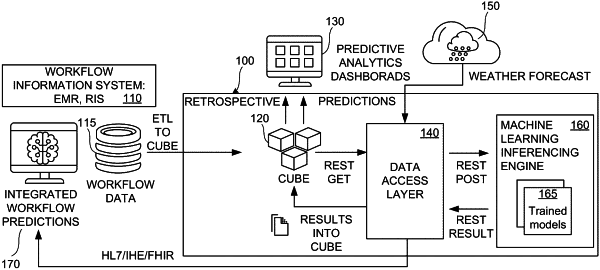| CPC G16H 40/20 (2018.01) [G16H 10/60 (2018.01)] | 20 Claims |

|
1. A predictive workflow analytics apparatus comprising:
a data access layer implemented using a first machine, the data access layer to gather and combine healthcare workflow data with non-healthcare data to enrich the healthcare workflow data for analysis with respect to a patient, the healthcare workflow data including at least one of a schedule or a worklist including a patient and an activity in the at least one of the schedule or the worklist involving the patient; and
an inferencing engine implemented using a second machine and including a plurality of trained models to generate a prediction including a probability of patient no-show to the activity by processing the combined, enriched healthcare workflow data using at least one of the plurality of trained models and triggering a corrective action for the activity based on the prediction, the inferencing engine enabling an update to one or more of the plurality of trained models based on at least one of the prediction or the combined, enriched healthcare workflow data,
the data access layer providing an abstraction between i) a logical model associated with at least one of the healthcare workflow data or the non-healthcare data and ii) the plurality of trained models of the inferencing engine, the abstraction enabling a first output of the logical model to be used with the plurality of trained models of the inferencing engine to generate the prediction.
|